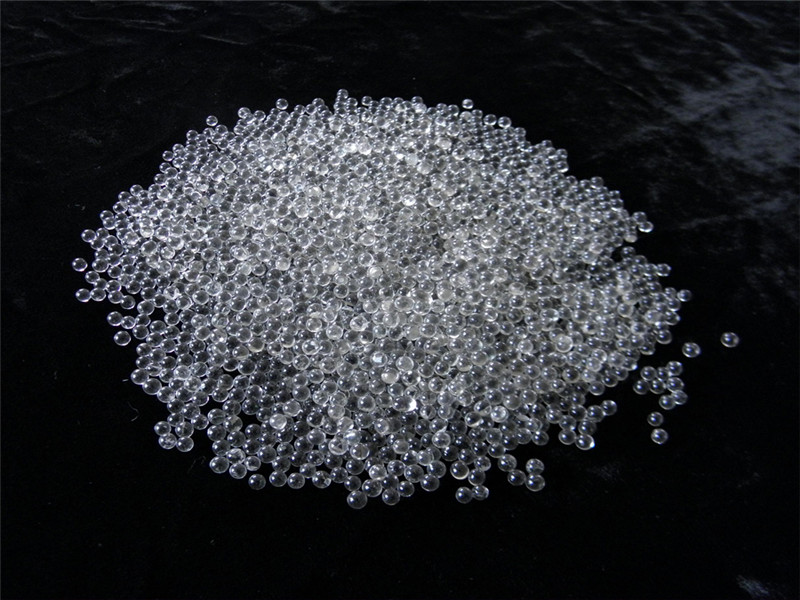When it comes to applications like abrasive blasting, surface preparation, or decorative uses, two popular materials that often come up are crushed glass and glass beads. Both offer unique benefits and have distinct characteristics that make them suitable for different purposes. In this article, we'll explore the differences between crushed glass and glass beads, their uses, and help you determine which is best for your specific needs.
1. What is Crushed Glass?
Crushed glass is made from recycled glass that has been broken down into smaller, angular fragments. This material is commonly used for abrasive blasting, cleaning, and as an additive in construction materials. Crushed glass is made by grinding glass into small pieces, which can vary in size and texture depending on the application requirements.
1.1. Uses of Crushed Glass
Crushed glass is primarily used in industrial and commercial applications. Some of the most common uses include:
Abrasive Blasting: Crushed glass is frequently used as an abrasive in sandblasting and surface cleaning, especially in industries that require the removal of rust, paint, and contaminants from metal surfaces.
Decorative Landscaping: Due to its shiny, reflective properties, crushed glass is often used in landscaping as a decorative element for paths, gardens, or water features.
Concrete Additive: In construction, crushed glass is sometimes mixed into concrete to improve strength and offer a sustainable alternative to traditional aggregates.
1.2. Characteristics of Crushed Glass
Crushed glass typically has the following characteristics:
Sharp Edges: The angular nature of crushed glass means it has sharp edges, making it effective for abrasive blasting and surface cleaning.
Variety of Sizes: Crushed glass is available in a wide range of sizes, from fine particles to larger chunks, depending on the intended use.
Eco-friendly: Because crushed glass is often made from recycled materials, it is considered an environmentally friendly option for many applications.

2. What are Glass Beads?
Glass beads, on the other hand, are small, spherical pieces of glass that are produced by heating glass to a molten state and shaping it into tiny, smooth balls. Glass beads are often used for more specialized applications such as reflective road markings, blasting, and in certain industrial and cosmetic applications.
2.1. Uses of Glass Beads
Glass beads are used in a variety of applications, including:
Reflective Road Markings: Glass beads are commonly added to road paint to enhance the visibility of road markings at night by reflecting headlights.
Abrasive Blasting: Glass beads are often used in abrasive blasting for cleaning or finishing surfaces without causing damage to the underlying material. Unlike crushed glass, glass beads leave a smoother finish.
Decorative Uses: Glass beads are also used in jewelry making, art projects, and other decorative applications due to their smooth, reflective appearance.
2.2. Characteristics of Glass Beads
Glass beads have their own set of characteristics that differentiate them from crushed glass:
Spherical Shape: Glass beads are round, which makes them ideal for certain applications where smooth, even abrasion is required, such as surface finishing.
Smooth Surface: The smoothness of glass beads means they do not cause damage to delicate surfaces when used for blasting or polishing.
Reflectivity: Glass beads are known for their high reflective properties, which is why they are used in road markings, signage, and other visibility-enhancing applications.
3. Key Differences Between Crushed Glass and Glass Beads
While both materials are derived from glass, they are distinctly different in their properties and uses. Here’s a breakdown of their key differences:
3.1. Shape and Texture
The most significant difference between crushed glass and glass beads is their shape. Crushed glass is jagged and angular, making it highly effective for abrasive blasting and cleaning surfaces. The sharp edges allow it to cut into surfaces and remove contaminants efficiently. On the other hand, glass beads are smooth and round, making them ideal for applications that require a gentler approach, such as polishing and creating a smooth surface finish.
3.2. Applications
Crushed glass is mainly used in abrasive blasting, concrete additives, and decorative landscaping. It is chosen for its cleaning and abrasive properties. In contrast, glass beads are more commonly used in reflective road markings, cosmetic applications, and in industries that require delicate cleaning or surface finishing without damaging the underlying material. They are also favored for their visual appeal in decorative uses.
3.3. Surface Finish
Because crushed glass has sharp edges, it can leave a rougher surface finish, making it ideal for tasks like stripping paint or rust from metal surfaces. Glass beads, with their smooth, round shape, leave a much finer, smoother finish, making them perfect for delicate cleaning, polishing, and peening processes where surface integrity needs to be maintained.
3.4. Durability
Crushed glass tends to wear down more quickly due to its angular shape, especially when used in abrasive blasting. This can result in more frequent replenishing. Glass beads, being spherical, last longer in abrasive applications because they retain their shape and smoothness over time.
3.5. Cost
In general, crushed glass is more affordable than glass beads, primarily due to the simpler manufacturing process. However, glass beads often offer better long-term value in applications where durability and smooth finishes are needed, reducing the need for frequent replacements.
4. Which One Should You Choose?
The choice between crushed glass and glass beads depends on your specific application. Here’s a guide to help you decide:
Choose Crushed Glass if: You need a material for abrasive blasting, rust or paint removal, or concrete mixing. It’s ideal for heavy-duty tasks that require a rough finish or surface cleaning.
Choose Glass Beads if: You require a gentler, more refined finish, such as polishing or delicate surface cleaning. Glass beads are also better for applications that need high reflectivity, like road markings or signage.
Both crushed glass and glass beads offer unique advantages, so understanding the differences in their characteristics will help you make an informed decision that meets the specific needs of your project.